|
TOHOKU-KANTO EARTHQUAKE/TSUNAMI - March 11, 2011
----------------------------------------------------------------------------------------------------------------------------------------------------------------------------------------------------------
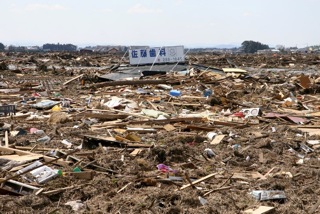 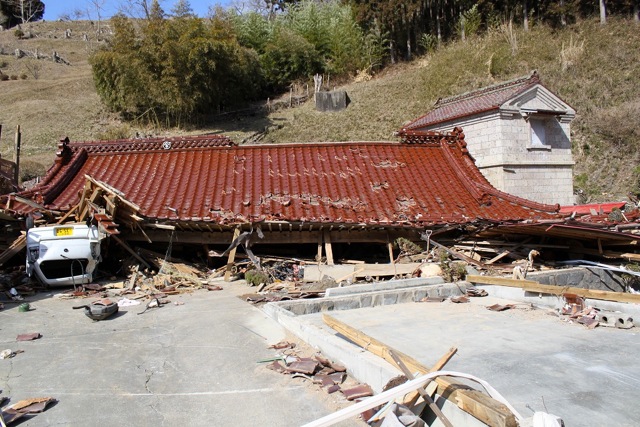 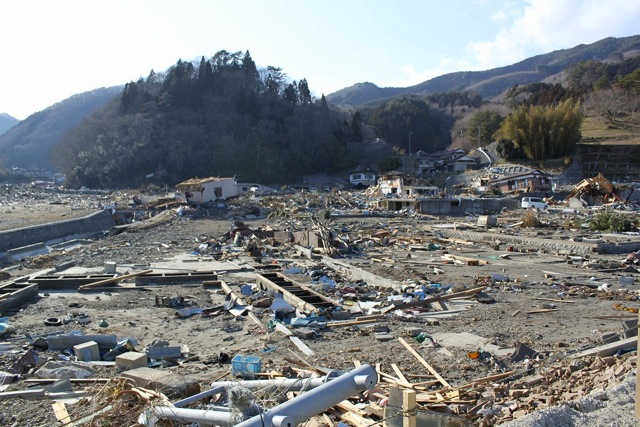 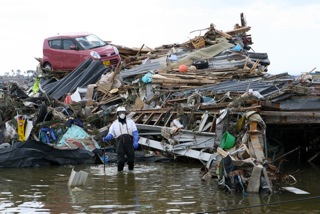 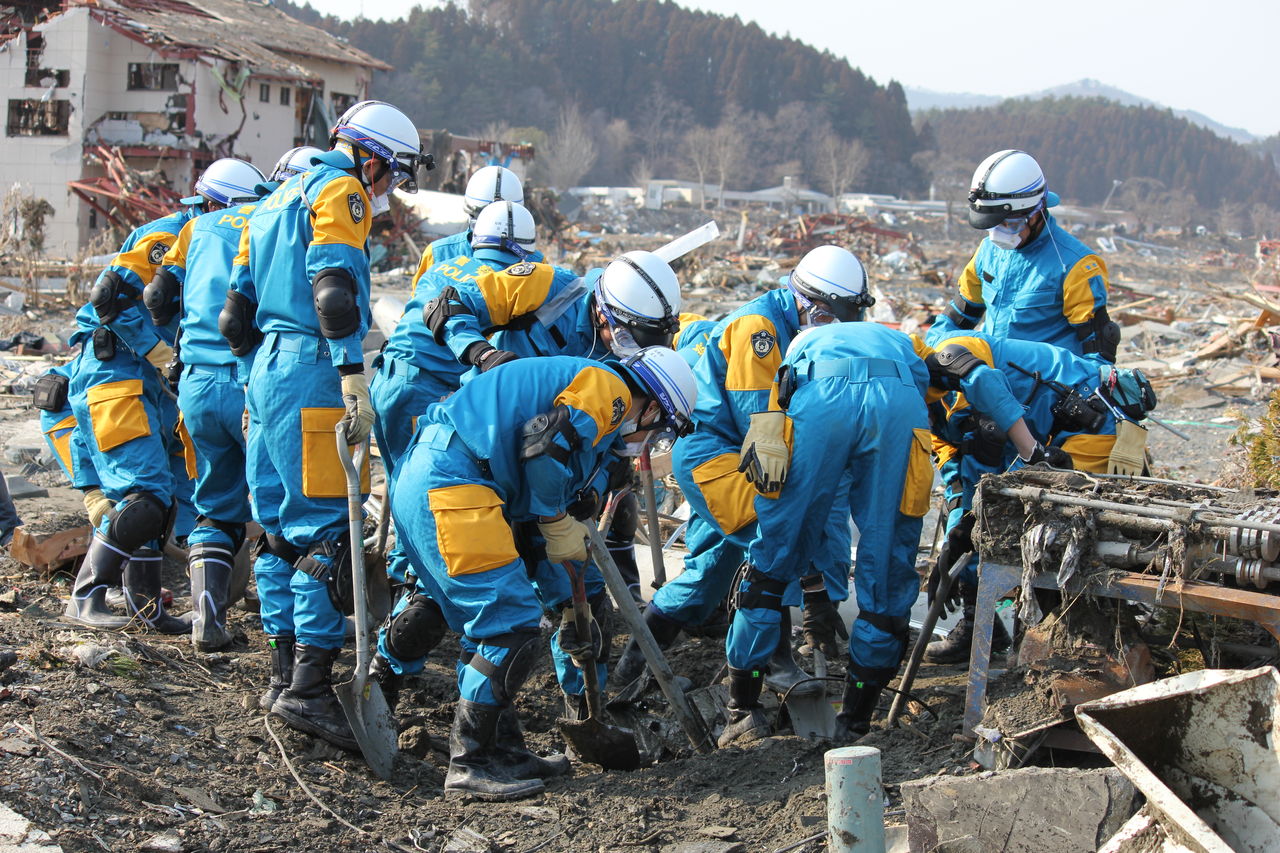 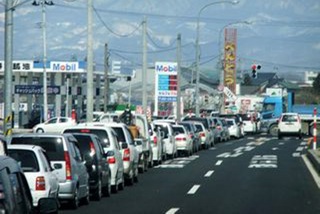 My friend in Tokyo wrote on Friday, April 8, 2011: Northern Japan was awakened again last night by an aftershock, this time of magnitude 7.
Luckily there was no major damage and no tsunami this time.
It was reported that the nuclear reactors were unaffected, but everyone’s nerves are still on edge.
The radiation leaks to date have not made it to Tokyo, but there is still a 30 kilometer (18 mile) exclusion zone around the reactors where no one is allowed to live.
Agriculture and fishing in the area may not be possible for years.
The reactors are still not controlled, and no one is sure how many months it may take to get them cooled off.
Until then, the whole of Tokyo seems on hold.
A fertility festival that is held every year was cancelled as it is inappropriate to be holding parties now.
The cherry blossoms are out, but no one seems interested in celebrating with a picnic under the trees.
Approximately 15,000 are reported dead and another 15,000 missing and presumed dead.
Fifty thousand houses were completely destroyed and another 160,000 were partially damaged.
About 150,000 people are still in evacuation shelters; many of them have no home to return to.
Half of the students in the American School in Tokyo have not returned from spring break, and many of them will probably opt to stay in their home country for good.
The lights of Tokyo have been turned down; bars and restaurants are running at less than half capacity.
Electricity blackouts have been cancelled, but no one is certain what will happen when summer comes and the air conditioners go on.
The whole of Tokyo just seems depressed.
 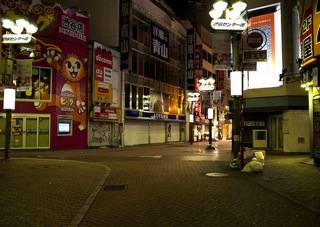 Shibuya, Tokyo
Another letter came from my friend in Tokyo on August 2, 2011
________________________________________________________________________________________________________________________________________________
NEWS REPORT
Sunday, Sep. 11, 2011
Six months on, few signs of recoveryProgress held back by debris, lack of jobs and slow planningBy TAKAHIRO FUKADA and SETSUKO KAMIYA
Staff writers
OTSUCHI, Iwate Pref. — After the March 11 earthquake and tsunami destroyed everything from houses to street lights, the town of Otsuchi, Iwate Prefecture, has been so dark and quiet at night it's unnerving.
But the light coming from a convenience store that reopened in late July has become a symbol of hope for the community. "Unless people start reopening their businesses, the town will never take the first steps toward reconstruction," said Taiko Tanisawa, the 63-year-old owner of the reopened Marutani store, as she warmly greeted customers. While Tanisawa and her family survived the catastrophe, her house and the store she ran since 1994 were destroyed by the tsunami and an ensuing fire caused by a propane gas leak. The March 11 disasters killed 799 of Otsuchi's 16,000 residents, including the mayor, and a further 608 were still missing as of the end of August. In addition, the tsunami either destroyed or damaged about 70 percent of the town's homes. "I felt that we should not remain in Otsuchi," said Tanisawa, who after March 11 considered leaving the town with her family and making a fresh start somewhere else. But she ultimately changed her mind because her neighbors kept encouraging her to reopen. She hopes the locals will interpret her reopened business as a step toward reconstructing the devastated town, even though the new store is only one-fifth the size of the previous one. Six months after the 9.0-magnitude quake and subsequent tsunami killed more than 15,700 people and left nearly 4,100 missing in the Tohoku region, survivors are trying to move forward and rebuild their shattered lives and communities. In the worst-hit coastal regions of Iwate and Miyagi prefectures, various restoration efforts have made progress, such as building temporary accommodations for evacuees who lost their homes and had to live in shelters, restoring crippled infrastructure and clearing debris in commercial and residential areas. But the massive piles of debris kept in temporary storage sites along the coast are just one indicator that a huge amount of work remains to be done. Creating new jobs is a priority, as many people who worked for businesses that were wrecked in March remain unemployed. A recent labor ministry survey showed that at least 70,000 people in Iwate, Miyagi and Fukushima prefectures lost their jobs because of the quake-tsunami catastrophe. The pace of recovery is slowest in Fukushima Prefecture, where the crisis at the crippled No. 1 nuclear station has forced thousands of residents in the government-set 20-km no-go zone around the leaking plant, as well as some living in radioactive hot spots outside the zone, to evacuate their homes. It remains unclear when, or even if, they will be able to return to their hometowns. The central and local governments have set a 10-year goal to fully restore disaster-hit areas in the devastated northeast, and plans to rebuild ruined communities have finally started to move forward. But rebuilding Tohoku won't come cheap. According to the central government's basic reconstruction plan released July 29, reconstruction costs will total at least ¥23 trillion over the coming decade, and cash-strapped local governments are asking the state to finance the bulk of those expenditures. Experts say rebuilding disaster areas is not simply a matter of returning them to their predisaster state. Redesigning towns and cities must take into account the probability that another monster tsunami will someday strike the region, they say. In addition, plans must factor in the aging populations of the disaster-hit communities, which even before March 11 were shrinking as residents aged and the young moved away in search of work. "What we need to do is design cities (and towns) in which people can live comfortably and safely," said Arata Endo, an associate professor at Kogakuin University and an expert on urban planning. "We must make them better places to live in than before, as the size of the communities shrinks." Since May, Endo has led a committee that includes architects, disaster management experts and local resident representatives to draw up a plan for rebuilding wrecked districts in the city of Kamaishi, Iwate Prefecture. The committee is seeking to produce a blueprint of how Kamaishi should ideally look in 20 years' time, Endo said. He stressed that it is crucial to solicit residents' ideas, even though it may not be possible to include them all in the final plan. The committee will submit its plan later this month to Kamaishi's disaster rebuilding committee for approval. Providing it gets the green light, the municipal assembly — which was slated to hold an election Sunday — will hammer out the plan's details.
In the case of Otsuchi, however, recovery and rebuilding efforts have been delayed by the loss of the mayor and dozens of municipal officials in the March disasters. A new mayor wasn't elected until the end of August. In the meantime, some residents decided to stand up and take matters into their own hands. In May, Otsuchi native Tomohiro Akazaki and others created a resident council to gather suggestions for rebuilding their ruined town. "I wanted to be part of rebuilding my hometown. It will be really sad if it disappears," said Akazaki, 33. The council held six rounds of discussions with residents and submitted its rebuilding suggestions to Otsuchi's municipal office in July. "The town office may ignore the opinion of a single residentbut hopefully they will listen to a group of residents," Akazaki said. Of the projected ¥23 trillion reconstruction budget for the next decade, the central government plans to spend ¥19 trillion in the first five years. This includes ¥6 trillion that already has been secured in the first and second extra budgets for fiscal 2011, and Prime Minister Yoshihiko Noda's new administration is aiming to submit a third supplementary budget to the Diet in October. To cover the costs, the government is considering hiking taxes, although no decision has been made on which ones to target. Kogakuin University's Endo said the central government must decide swiftly on the projects to be financed by the budget, so that local governments can soon start their rebuilding efforts. Back in Otsuchi, Tanisawa said she is worried about the town's future as she fears that many young residents who lost their jobs in the disasters will move away, accelerating Otsuchi's depopulation. In terms of rebuilding the town, Tanisawa called for more streetlights, because the darkness of the blacked-out town frightens her at night. "If someone tries to attack my store, no one would come to help me," she said. Due to safety concerns, she closes her new store at 8 p.m. — her previous business stayed opened until 11 p.m. "My old neighbors, who are now living in temporary housing far away, also hope to return to their original neighborhoods," she said. "I hope residents will eventually return, and the town will again shine brightly." (Japan Times) -------------------------------------------------------------------------------------------------------------------------------------------------- May 18, 2011 - updates from Takasaki - new CTBTO report released ( direct link to report) Cesium-134 and tellurium-129 (normal and metastable) show the same curiously sustained levels as cesium-137 in air around central Japan through the second week of May. (Note that CTBTO stations, as with Poland's monitoring efforts (and TEPCO/MEXT's efforts), do not provide information on airborne levels of pure alpha or beta particles (or some alpha or beta particles that have very weak gamma energies). Thus, you *won't* see radiostrontiums or plutoniums from CTBTO analyses (or the other mentioned monitoring analyses) - this *does not* mean radiostrontiums or plutoniums aren't present in our air. They likely are present in small quantities globally.) The spikes at the Takasaki CTBTO station occurring around every 20th day since the earthquake are *not* the result of rainouts from radioactive clouds that are traveling around the globe, although, to a small degree, Japan, as with the rest of the world, receives contaminated water on the ground every time it rains. The spikes are more likely the result of radioactive plumes1 emitted by Fukushima's many blobs of melted fuel slightly undergoing recriticality that regularly leak xenon-137 gas into the exposed air - note that many reactors at Fukushima Daiichi have no containment of any sort for dust particles or gases - this is a 'design flaw' for a post-meltdown, ruptured-containment nuclear reactor management scenario and is truly a time bomb considering the reactors are located within an earthquake-prone hot-zone and (the scenario is) managed by a lying, greedy and incompetent company called TEPCO. This xenon-137 gas precipitates into *new* cesium-137 in a short amount of time and cesium-137, a microscopic metallic atom, can travel hundreds or thousands of miles on air currents. This cesium-137 airborne pollution occurs routinely downwind of nearly all nuclear reactors but in amounts that don't seem to bother anyone - although it should. At Fukushima, recriticality and resuspension of dust particles is out of control and putting the lives of tens of millions of Japanese in grave danger. How? Recent data (see post below) indicates that two locations in downtown Tokyo have extremely high levels of cesium-137 in soils - at thousands of becquerels per kilogram of soil. These levels should require evacuation or immediate soil cleanup. Owing to the extreme dangers posed by cumulative depositions of radionuclides in Japan over time from these ongoing refissioning events, it is folly to believe any agency or person who says this situation is stabilizing. It is worsening by the day because of the simple principle as follows: long-lived radioactivity deposited in one location added to existing long-lived radioactivity deposited in that location will result in greater amounts of long-lived radioactivity - this means the cumulative levels in Tokyo of cesium-137 and dozens and dozens of other long-lived isotopes from refissioning has made the metropolis more radioactive than ever before. If you add up the daily depositions of cesium-137 since late March, at some point in the not so distant future this total will equal or even surpass the depositions from the most potent and dramatic plumes of the hydrogen explosions and ventings at Fukushima in mid-March. If it was 'so so' safe in Tokyo in mid-March, Tokyo has become not so safe now, and it will be even more unsafe tomorrow. As long as Fukushima has no containment, the situation will continue to *deteriorate* - the air, the water, the food and the milk will contribute a consistent supply of poisons - of long-and short-lived radioactivity - into the stomachs of Japanese. The onslaught will not end even in 2012 - if you live on a radioactive land, you will become radioactive with it - it is just a matter of time before your body reflects the contamination levels of the environment around you. This was documented by the U.S. Department of Energy Brookhaven lab scientists who studied the Rongelapese people. It is not the radiation that is emitted from the ground or the air from gamma-emitters like cesium-137 that is the biggest problem. We hear about the threat of Iodine-131 and Cesium-137 - this is deliberate - this is part of a scheme to 'paint' radiation hazards in the kindest light possible. TPTB want us to think only about external emitters, meaning radioactive particles that shoot radiation into our bodies from outside. The fact is that 90% of the dose you receive during a radiation incident is via your diet from what are called internal emitters. As viewed in this light - a honest light to view radiation, focusing on biologically significant internal hazards - it is our contention and formidable worry that the Japanese people are *eating* their way to malignancies, genetic defects, cancers, leukemias, immune disorders and 'atomic-age' diseases, like autism, that the medical community is too proud or stupid to realize is very likely connected to the persistent exposure to radioisotopes in our diets. To repeat our advice from over one month ago: leave Tokyo and northern Japan, don't drink the water, don't eat the food and don't even trust that staying in your homes is safe considering that very powerful gamma energies from radioisotopes like lanthanum-140 can penetrate concrete and one speck of plutonium-238 floating through your door that you unluckily inhale will do you in eventually. It is that bad. Friends in the U.S., Canada, Japan, and worldwide: it has come down to credibility. Japan and the U.S.A. and all atomic/nuclear agencies and corporations in those nations are not credible on this issue. They never were credible on any atomic issue and continue to mock science, violate your trust and trash democratic and moral documents upon which your nations were founded. You *must* put your trust in new people and institutions. You *must* acknowledge with your whole heart and soul, if just this once, for your welfare, that there are times when any credible institution, like any man or woman, can act uncaring for selfish motives in a very deceitful and organized way - that even our governments, our international governments, and our medical and scientific bodies are capable of such chicanery - that even they may imperil us and the ones we love.
|
|



